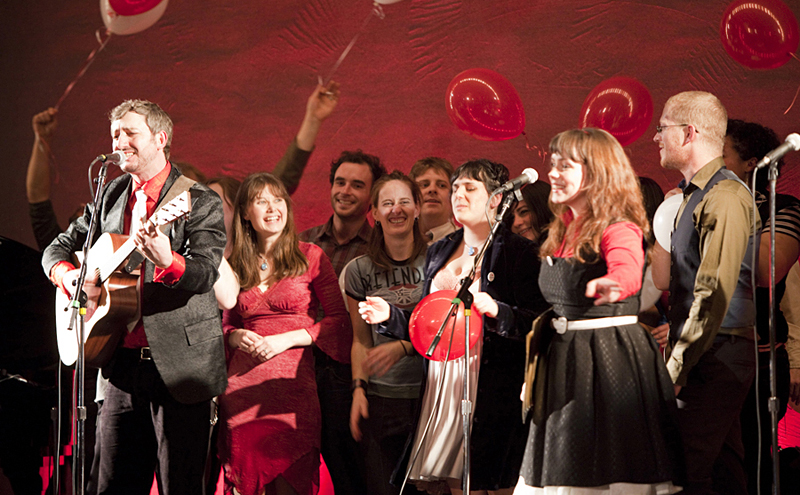Venturing no further than the sidewalk outside the Arboretum Visitor Center, Arthur Lee Jacobson could probably make a salad.
He points to a tuft of wild greenery sticking out from a sidewalk crack. “This is a common weed,” he says, tearing off a leaf with thumb and forefinger and popping it into his mouth. “Dandelion,” he says, chewing with a grin.
He takes a few steps: “Here’s another, this is a Seattle native. These are called fringe cups. The leaves are too fuzzy to eat…but these little flowers here are filled with nectar. So you take the flowers, pop ’em in, and they’re delicious.”
I’ve asked Jacobson to take a walk with me because I’m searching for a free meal. As a lecturer, tour guide, gardener, and author of Wild Plants of Greater Seattle, Jacobson has spent decades identifying and cataloging more wild plants in the area than, according to Jacobson himself, anyone he knows. A self-professed plant geek, Jacobson looks every bit the part: patchy beard, soiled cargo pants, loose mane of curly gray hair, and the glazed expression of a man constantly wowed by his surroundings. When he walks, he hardly looks up, always on the prowl for a plant he either does or doesn’t recognize.
Personally, I’m interested in Jacobson identifying only the plants I can eat. These are strange and depraved times, after all, and one never knows when one will be forced into survivalist mode. I refuse to hunt city game, so I figure salad greens would be the easiest thing to gather (for expertise in wild mushrooms, however, Jacobson says I will need to consult his brother: “He’s the mushroom guy.”)
But wild plants are tricky: Some are edible, some deadly, and the ill-informed would not know the difference. God forbid we end up like that kid from Into the Wild, starved and insane, wandering the streets of Seattle like a rabid animal, all from ingesting the wrong potato seed. Though he urges wannabe foragers to do their research, Jacobson isn’t one to caution against eating wild plants. To him, this planet was built for our sustenance, and it’s against our nature to ignore it.
But urban plants are largely ignored where groundskeeping is concerned, so Jacobson is a bit perturbed that the Arboretum has been freshly mowed the day we meet.
“Mowing is like having a goat or a sheep on the property,” he says. “It kills everything, which is annoying to a plant buff.”
Regardless, he finds plenty to show me. We chew the yellow heads of dandelion flowers, uproot some wild burdock, pluck a little wild mustard, chew on some birchbark shavings, and admire handfuls of tiny, vibrant wildflowers (“They’re edible, but they are bland-bland-bland. However, they do look good on a salad.”) Following him sometimes feels like trailing a hound on a scent. He cuts divergent paths from one plant to the next, veers off course when some other plant catches his eye, and ventures to specific areas like marshes or stone walkways because he knows certain plants thrive there. He’s like the coolest science teacher you never had, which is to say he unloads a ton of information nearly impossible to remember. This is where his book comes in handy.
Wild Plants of Greater Seattle (now in a self-published second edition) offers detailed descriptions of 1,385 native and non-native species of vines, shrubs, trees, wildflowers, weeds, grasses, rushes, sedges, brambles, horsetails, and ferns. For each, Jacobson provides information on what it looks like and where to find it, as well as notes on toxicity, medicinal properties, and, most important, edibility. I took Jacobson’s book home and have since found common chickweed (“the single best wild lettuce-like substitute”), field mustard (“a most valuable wild food”) and wall lettuce (“eat it raw in winter”). They were all delicious unprepared, but even better tossed with a little garlic, sesame oil, and black pepper. Each green was found in the parks and alleyways of my neighborhood. The latter, Jacobson says, are prime spots for foraging, as he takes me on a detour through Montlake’s residential alleys.
“Alleys are like catching people at home when they’re not expecting company,” he says.
And purely by accident, he proves this point to the nth degree. “Ah, see this,” he says, stopping in his tracks alongside someone’s garage. “Our government could confiscate everything these people own because of this plant.”
He crouches down next to the leafy weed: “This here is opium.”
For more information, or to purchase Wild Plants of Greater Seattle, visit www.arthurleej.com.







